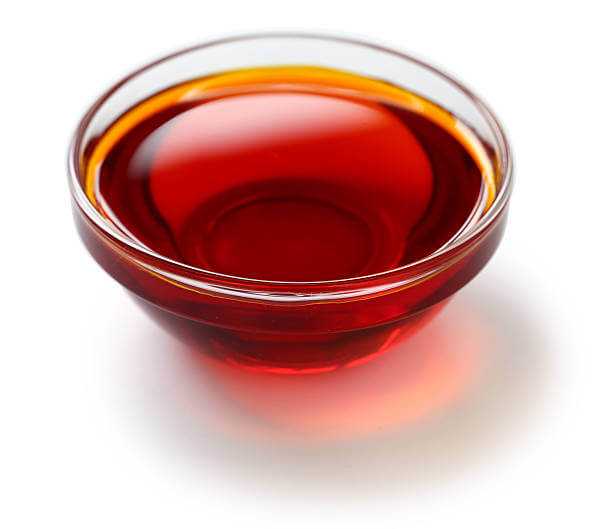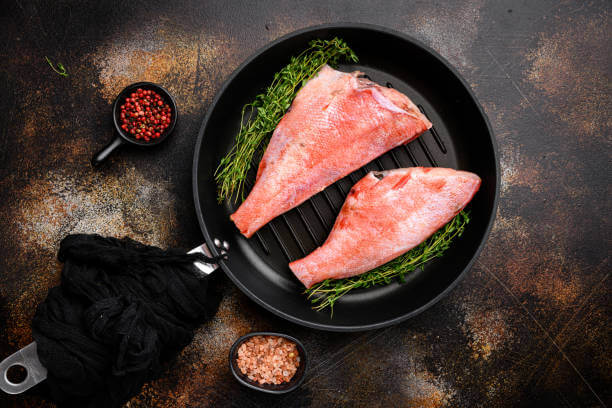
If you’ve ever found yourself with a bag of frozen prawns in the freezer and wondered, “Can I cook with these?” – you’re not alone. Defrosting prawns safely is a crucial step in preparing a delectable seafood dish while ensuring food safety. In this article, we’ll unravel the four best practices for thawing prawns from frozen. From quick weeknight meals to elegant dinner party dishes, you’ll soon discover that cooking with frozen prawns can be a delicious and time-saving solution that delivers on flavor and freshness.
Things You Should Know About Frozen Prawns
Frozen prawns are typically deep-frozen shortly after harvesting to maintain freshness. Proper defrosting is crucial to avoid potential foodborne illnesses. Bacteria can thrive if prawns are thawed incorrectly.
Correctly defrosting prawns helps retain their texture and flavor. Rapid or improper thawing can lead to a loss of moisture, resulting in a less appetizing, rubbery texture.
Thawing prawns safely ensures that you preserve the nutritional value of the seafood. Overcooking or exposing prawns to heat for too long can diminish their nutrient content.

Do You Need to Defrost Frozen Prawns?
Before you cook frozen prawns, you have to defrost the prawns. Frozen prawns are stored at temperatures below freezing to ensure they remain safe to eat for an extended period. Consuming them in their frozen state can be unpleasant and potentially harmful.
Cooking frozen prawns directly (unlike fresh prawns) can lead to uneven cooking, where the outside may overcook before the inside is fully done.
Is it Safe to Defrost Prawns Quickly?
Defrosting frozen prawns too quickly is generally not safe due to the risk of bacterial growth and the potential for uneven thawing.
Prawns, like all seafood, can carry bacteria, including harmful pathogens such as Salmonella and Listeria. When you thaw prawns quickly, especially at higher temperatures, the outer layers may warm up to a temperature where bacteria can multiply rapidly. This can lead to foodborne illnesses if the prawns are not cooked thoroughly.
Also, quick thawing, such as using hot water or a microwave does not let the prawns cook evenly, and can cause uneven thawing. The outer layers may become warm and start to cook while the inner parts remain frozen. This results in an undesirable texture with overcooked exterior portions and undercooked interior portions.
Rapid thawing methods can also cause the prawns to lose moisture quickly, resulting in a drier, less flavorful, and rubbery texture.

Can You Cook with Frozen Prawns Directly?
So can you cook prawn without thawing it first? No, it’s highly unadvisable to throw frozen prawns into a pan you need to defrost them first. Frozen prawns have a lower temperature than what’s required for cooking. When you cook them from frozen, the exterior may cook quickly while the interior remains undercooked.
Rapidly cooking frozen prawns will cause them to lose moisture quickly, resulting in a less appealing texture.
How Do I Thaw Prawns?
So now the big question. How do you properly thaw frozen prawns? Here are three great ways you can thaw frozen prawns:

Defrosting in The Microwave
Can you thaw your prawns in the microwave? Yes you can, despite popular belief using the microwave is a great way to thaw frozen prawns. Defrosting cooked prawns in the microwave can be done, but it requires a gentle touch to prevent overcooking or overheating, which can negatively affect their texture and flavor.
Things You’ll Need
- Frozen Cooked Prawns: Ensure you have the frozen, cooked prawns you intend to defrost.
- Microwave-Safe Dish or Plate: You’ll need a microwave-safe container or dish that is large enough to accommodate the prawns in a single layer without overlapping. Glass, ceramic, and some microwave-safe plastics are suitable choices.
- Microwave: You should have access to a microwave oven. Most modern microwaves come with a defrost setting or allow you to adjust the power level.
- Microwave-Safe Cover or Microwave-Safe Plastic Wrap: To prevent splattering and maintain moisture during the defrosting process, you may need a microwave-safe cover or plastic wrap to partially cover the dish or plate.
How to Do It
Place the prawns in a microwave-safe dish or a microwave-safe plate. Ensure that they are arranged in a single layer without overlapping.
Most microwaves have a “defrost” setting, which is preferable for thawing prawns. If your microwave does not have a specific defrost setting, use the lowest power setting available.
Start by defrosting the prawns in short intervals. For example, begin with 1-2 minutes at a time.
While the prawns are in the microwave, closely monitor their progress. You want to thaw them without cooking them. After each interval, check the prawns to see how much they have thawed.
If you notice that the edges of the prawns are starting to cook while the center remains frozen, stir or turn them to ensure even thawing.
Continue microwaving the prawns in short intervals, checking and turning as necessary, until they are fully thawed. Depending on the quantity and size of the prawns, this may take 3-5 minutes or more.
Once the prawns are thawed, use them immediately in your recipe or dish. Avoid letting them sit at room temperature.

Defrosting Prawns in Cold Running Water
Defrosting prawns using cold running water is a safe and effective method if you need to speed up the thawing process.
Why use cold water to thaw prawns? Cold water inhibits the growth of harmful bacteria, which can multiply rapidly when exposed to warmer temperatures.
Cold water also provides a controlled and even thawing process. Using warm or hot water can lead to uneven thawing, where the outer layers of the prawns thaw faster than the inner parts, potentially resulting in a less desirable texture.
Things You’ll Need
- Frozen Prawns: The prawns you want to defrost, which are still in their frozen state.
- A Sealed Plastic Bag: A resealable, airtight plastic bag to prevent water from entering the bag and to keep the prawns from getting waterlogged.
- Running Cold Water: A source of clean, cold tap water. You can use a kitchen sink or a large bowl with a steady stream of cold water.
- Timer or Watch: You’ll need a timer or a watch to keep track of the time. The total time required for defrosting will vary based on the quantity and size of the prawns.
How to Do It
Gather your prawns: Make sure the prawns are sealed in an airtight, leak-proof bag. If they are not already sealed, place them in a resealable plastic bag. This prevents water from seeping in and maintains the quality of the prawns.
Sink or bowl: Find a clean sink or a large bowl that is deep enough to submerge the prawns completely.
Cold, running water: Turn on the cold water tap to a slow, steady stream. The water should be cold, not warm or hot, to prevent the prawns from starting to cook during the thawing process.
Submerge the prawns: Place the sealed bag of prawns under the running cold water. The water should be circulating over the prawns continuously.
Check and rotate: Check on the prawns regularly, and if you notice any clumps or areas that seem to be thawing faster than others, gently rotate or massage the prawns within the bag to ensure even thawing.
Time frame: The prawns should thaw within 1-2 hours, depending on the quantity and size. It’s important to monitor the process and not leave them under running water for an extended period to avoid over-thawing.
Cook immediately: Once the prawns are fully thawed, you should cook them immediately. Do not re-freeze previously frozen prawns, as this can affect their quality and safety.

Defrosting Them in the Fridge
Defrosting frozen raw prawns in the refrigerator is one of the safest and most effective methods. It’s a slow process, but it preserves the prawns’ quality and minimizes the risk of bacterial growth.
Things You’ll Need
- Frozen Prawns: The prawns you intend to defrost should be securely sealed in an airtight, leak-proof container or a resealable freezer bag. Make sure they are properly labeled with the date you froze them.
- Refrigerator: You’ll need access to a refrigerator where you can place the prawns. Make sure the refrigerator is clean and operating at a temperature of 40°F (4°C) or below.
- Platter or Tray: It’s a good idea to place the prawns on a platter or tray inside the refrigerator. This prevents any liquid that may leak as the prawns thaw from dripping onto other items in the fridge.
- Food Thermometer: While not absolutely necessary, having a food thermometer is helpful to ensure the prawns have thawed to a safe temperature. The prawns should be at or below refrigerator temperature when fully thawed.
How to Do It
Ensure that the frozen, cooked prawns are in an airtight container or a resealable plastic bag. If the prawns are not in a sealed container, transfer them to one before placing them in the fridge.
Select a shallow, microwave-safe container or a plate with raised edges to place the prawns on. This container will catch any moisture or liquid that may be released during the thawing process.
Put the prawns in the container and place it in the refrigerator. Make sure to keep the prawns on a lower shelf to prevent any potential cross-contamination with other foods.
Thawing prawns in the refrigerator is slow, typically taking 6-12 hours or overnight. It’s best to plan ahead and start the process well in advance of when you intend to use the prawns.
After the recommended time has passed, check the prawns to see if they are fully thawed. They should be soft to the touch, pliable, and show no signs of frost or ice.
Once the prawns are fully thawed, use them immediately in your recipe or dish. Avoid letting them sit at room temperature.
What Method Should You Use to Defrost the Prawns?
The refrigerator method is recommended for most situations. It is the safest and best for maintaining prawn quality and is usually used when you have the time to plan ahead. The cold water method is faster than refrigerator thawing and is used when you need to defrost prawns more quickly.
The microwave method is the fastest of all the methods but much caution is advised when using this method to defrost the prawns.
How Do You Know That The Prawns Are Thawed Out Completely?
When you touch the prawns, they should be pliable and flexible throughout, with no frozen or icy areas. If you can easily bend the prawn without encountering resistance, it’s likely thawed. If you feel any hard, frozen spots, it’s not fully thawed.
Examine the prawns closely. Fully thawed prawns should have a consistent appearance without any visible ice crystals. If you see any frost or ice on the prawns, they are not yet fully thawed.
Using a food thermometer, you can check the internal temperature of the prawns. They are considered fully thawed when they reach a temperature similar to the surrounding environment

Is it Safe to Refreeze Prawns?
Refreezing prawns can be safe if you follow certain guidelines and use proper food handling practices.
Prawns should never be left at room temperature or in the “danger zone” (between 40°F and 140°F or 4°C and 60°C) for an extended period. This can promote bacterial growth and foodborne illnesses. Therefore, if prawns have been left out for a significant amount of time, it is not safe to refreeze them.
If you’ve thawed prawns in the refrigerator or under cold, running water, they can typically be refrozen as long as they haven’t reached a temperature where bacteria can grow rapidly. However, prawns thawed in the microwave should be cooked immediately rather than refrozen because the microwave can create hot spots that encourage bacterial growth.
How to Warm or Heat Frozen Cooked Prawns
Heat a non-stick skillet or frying pan over medium-low to medium heat. You can add a small amount of oil or butter to the pan, but this is optional, especially if the prawns were originally cooked with a sauce or seasoning.
Place the frozen, cooked prawns in the heated pan. If the prawns were previously cooked with a sauce, you can pour the sauce over them as they heat.
Gently stir and flip the prawns as they thaw and heat. It should take about 5-7 minutes for them to heat through. Make sure they are uniformly heated and no longer frozen in the center.
Once the prawns are heated to your satisfaction, remove them from the heat and serve immediately.
Where to Buy Frozen Prawns
Most grocery stores and supermarkets have a seafood section where you can find a variety of frozen seafood, including prawns. Here at our African Food Store, we sell affordable fresh frozen prawns in the UK.
Conclusion
Knowing how to defrost prawns safely is an essential aspect of ensuring the quality and safety of your seafood dishes. By following recommended thawing guidelines and applying the right methods, you can prevent bacterial growth, maintain the prawns’ texture and flavor, and significantly reduce the risk of foodborne illnesses.





Leave a comment